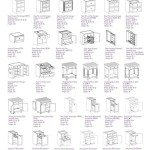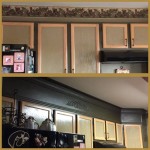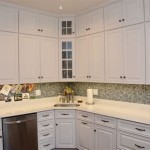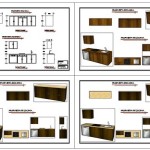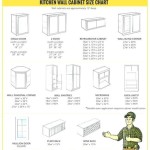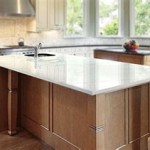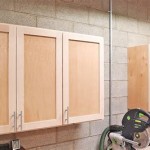How to Design Kitchen Cabinets
Kitchen cabinets are a central element of any kitchen, both in terms of functionality and aesthetics. Well-designed cabinets can enhance the overall kitchen design, maximize storage space, and facilitate efficient workflow. This article will explore the key steps involved in designing kitchen cabinets, providing a comprehensive guide for homeowners and kitchen designers alike.
1. Define the Needs and Style
The first step in designing kitchen cabinets is to define the specific needs and desired style of the kitchen. This involves careful consideration of several factors:
- Lifestyle: The number of people using the kitchen, their cooking habits, and their storage requirements should be taken into account. For instance, a family with young children might require more accessible storage solutions for snacks and dishes.
- Kitchen Layout: The size and configuration of the kitchen will influence the placement and design of the cabinets. For example, a galley kitchen might require more narrow cabinets than a larger, open-plan kitchen.
- Desired Style: The overall aesthetic of the kitchen should be reflected in the cabinet design. Choices range from sleek and modern to traditional and rustic.
- Budget: Setting a realistic budget early on is crucial. Cabinet materials, construction methods, and finishes can vary significantly in cost.
2. Determine Cabinet Types and Configuration
Once the needs and style are established, the next step is to determine the specific types of cabinets needed and their arrangement within the kitchen. Common cabinet types include:
- Base Cabinets: These cabinets are typically placed on the floor and provide storage for pots, pans, and other larger items.
- Wall Cabinets: Wall cabinets are mounted above the countertop and offer storage for plates, bowls, glasses, and other frequently used items.
- Tall Cabinets: Tall cabinets, also known as pantry cabinets, offer ample storage space for larger items like appliances, linens, or bulk food supplies.
- Specialty Cabinets: These cabinets are designed for specific purposes, such as corner cabinets, lazy Susan cabinets, or spice racks.
The configuration of cabinets is crucial for maximizing storage space and creating an efficient workflow. Consider creating a layout plan that includes the placement of all appliances, sinks, and other fixtures. This will help determine the optimal placement and size of each cabinet.
3. Select Materials and Finishes
The choice of materials and finishes will significantly impact the look and feel of the kitchen cabinets. The most common materials used for cabinet construction include:
- Wood: Wood is a popular choice for cabinets, offering durability, natural beauty, and versatility. Common wood species include maple, cherry, oak, and walnut.
- Laminate: Laminate is a cost-effective alternative to wood, offering a wide range of colors and patterns. It is also relatively resistant to scratches and moisture.
- Thermofoil: Thermofoil cabinets have a vinyl veneer that is heat-sealed to the cabinet doors. This creates a smooth, durable finish that is easy to clean.
- Painted: Painted cabinets offer a wide range of color options and can be customized to match any kitchen decor.
Finishes include hardware, countertops, backsplashes, and accessories. These elements should be chosen to complement the overall cabinet style and create a cohesive look. The hardware, for instance, can be selected in various materials, sizes, and finishes, such as brushed nickel, oil-rubbed bronze, or polished chrome.
4. Consider Functional Features
In addition to aesthetics, it's important to consider functional features that will enhance the usability and convenience of the kitchen cabinets. Some key features include:
- Drawer Slides: High-quality drawer slides, such as soft-close slides, ensure smooth, quiet operation and prevent drawers from slamming shut.
- Cabinet Lighting: Under-cabinet lighting provides task lighting for food preparation and enhances the overall ambiance of the kitchen.
- Storage Solutions: Consider incorporating specialized storage solutions, such as pull-out shelves, spice racks, or drawer dividers, to maximize the use of available space.
By incorporating these functional features, you can create a kitchen that is both stylish and practical, meeting the needs of the users and enhancing their overall kitchen experience.
5. Seek Professional Assistance
While it's possible to design and plan kitchen cabinets independently, seeking professional assistance from a kitchen designer or cabinet maker can be highly beneficial. They can provide expert guidance on layout, materials, finishes, and functional features, ensuring that the cabinets are tailored to your specific needs and preferences.
A professional can also help with the installation process, ensuring that the cabinets are properly installed and aligned to maximize their longevity and functionality.

Kitchen Cabinet Design Tutorials

15 Stunning Kitchen Cabinet Designs In Singapore With 5 Essential Tips

Creative Kitchen Cabinets For A Stylish

Kitchen Wardrobe Cabinet Ideas For Your Home Designcafe

How To Design A Traditional Kitchen With Diy Cabinets

Kitchen Design 350 Modular At Best In 2024 Kitchens Ideas

Contemporary Kitchen Cabinets For Your Home Design Cafe

64 Kitchen Cabinet Design Ideas 2024 Unique Styles

Custom 32 Feet Modern Minimalist Kitchen Cabinet L Shape Design 3 Picket Rail Furniture Interiors

Kitchen Design Cabinets Latest Modern Elegant For Your Home
Related Posts

